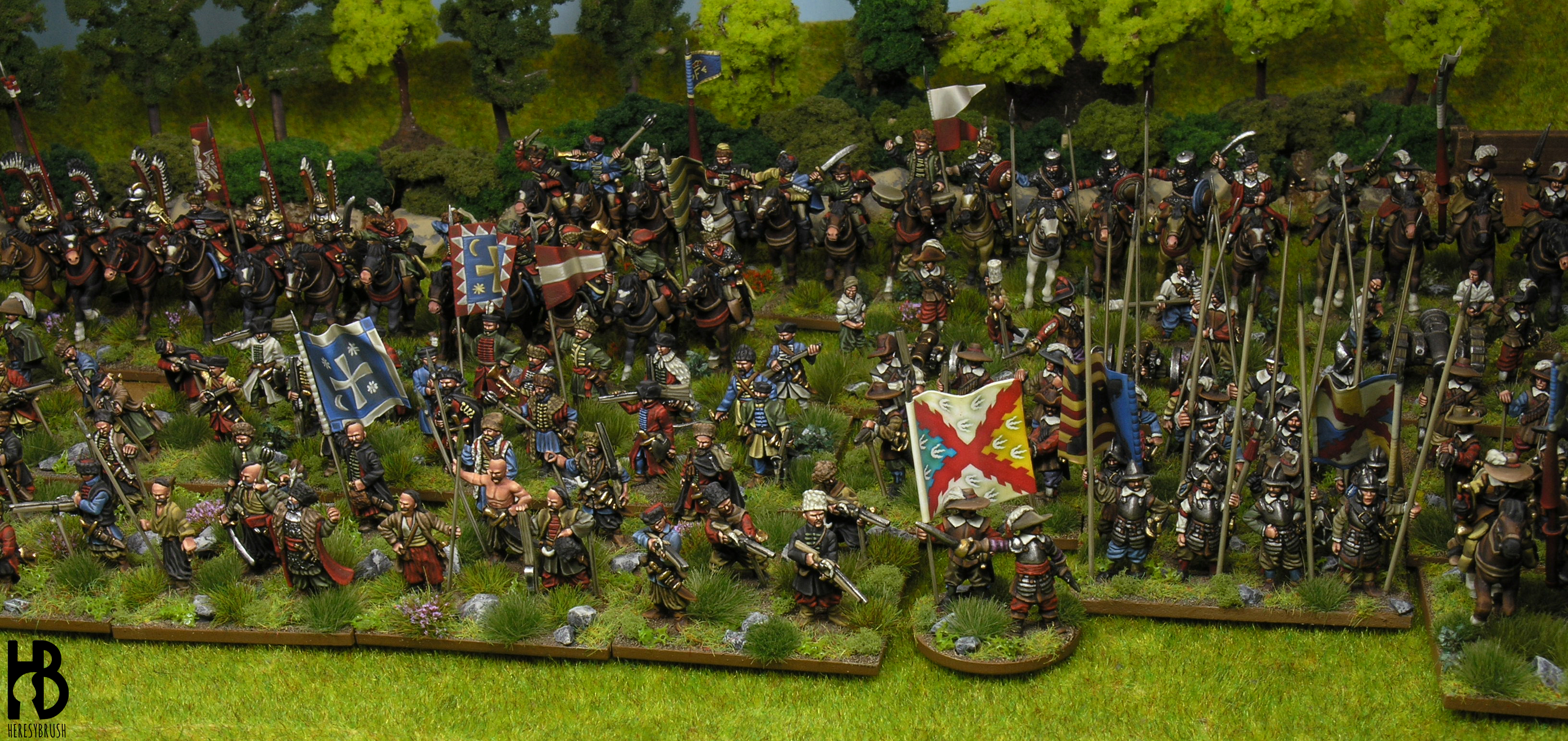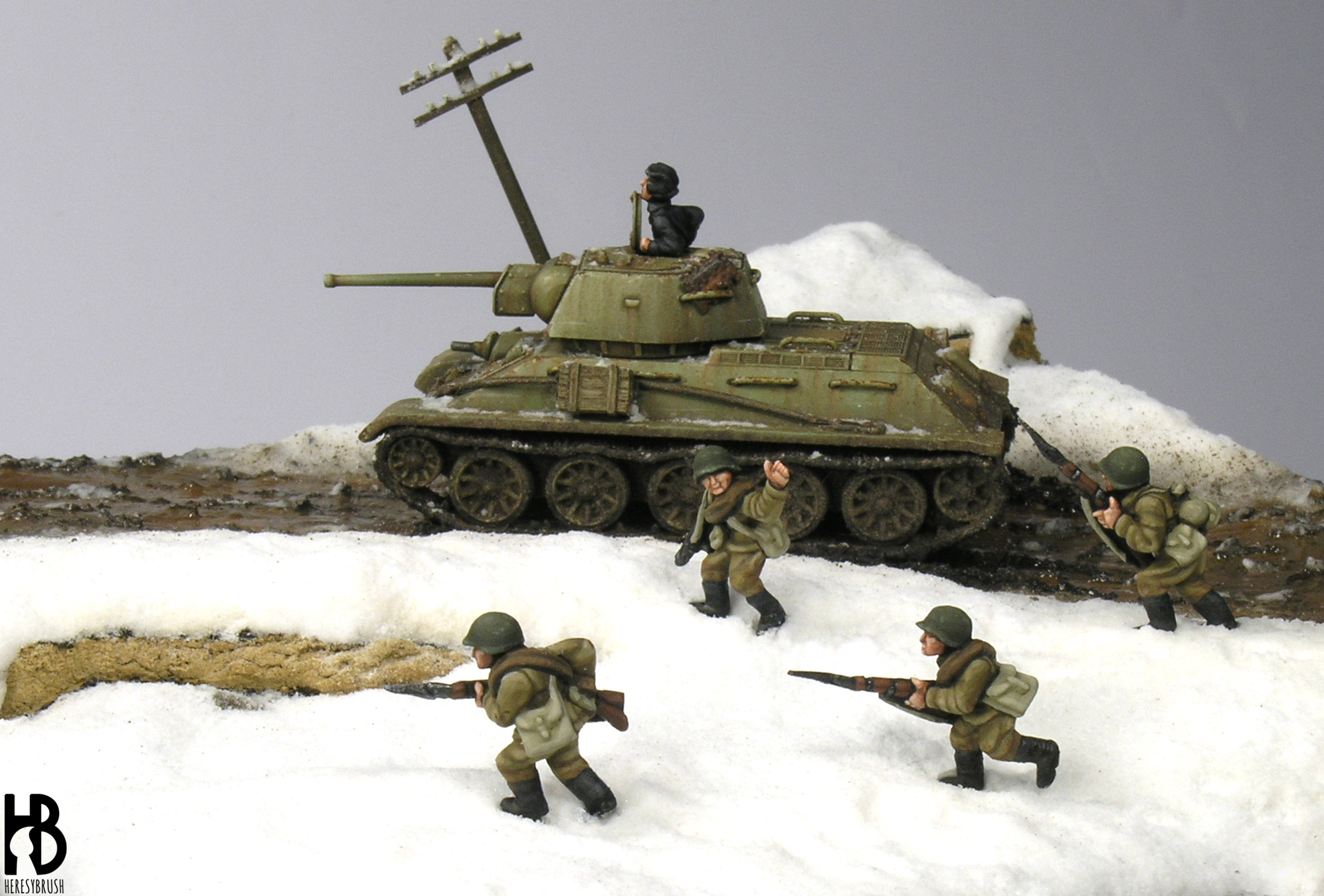I was so fortunate when people from Wargames: Soldiers & Strategy asked me for preparing a cover for the special Salute issue. They wanted me to prepare a vignette or small scene with some 28mm Italo-Norman knights from Conquest Games; and I decided to build a diorama where a number of knights are crossing a meadow. I would like to share with you some hints about how I built it, although you will find more information in the WS&S 84 issue. Prior taking the putty and knife, I took a piece of paper and a ruler in order to design…
How to paint Afrika Korps vehicles
After painting two infantry platoons of Deutsche Afrika Korps for my brother, I have painted two vehicles units: three tank hunters Diana and two recon Sdkfz 232 8 rad. I wonder when he is going to start painting the rest of his army! Anyways, I wanted to share with you this simple painting guide to simulate the classical chipping effect on DAK vehicles using an easy technique. When I have a vehicle platoon in my hands, I always try to avoid the repetition and monotony. That is, whether I have three vehicles in the platoon, I will add different elements…
PaintingWAR: Spanish Civil War
Once again I am pretty happy to announce a new book: PaintingWAR: Spanish Civil War. Thanks to the Editor, Quino, and the co-workers (Rafa, Pepe, Nacho and so on) for this new oportunity. If you don’t know the line of books PaintingWAR from Proyecto Cruz, you are missing a very nice source of information. There are foor published books so far, every one focused on an army and war time (WWII and Napolonic Wars at the moment). I have the honor to sign the fifth book of the series, centred on the Spanish Civil War, and covering both the Nationalist…
Mud splatter effects in 15mm
While I am working on different projects, such as the new PaintingWar book focused on the Spanish Civil War, I have no time to prepare any tutorial for my blog. It is a pity. Nonetheless, you can follow my work in www.ModelBrush.com, a blog which I run with some friends. Strikingly, I have found an abandoned painting guide in my computer (that is, unpublished) and I would like to exploit it, starting by this “mud splatter effects in 15mm” tutorial. A very simple but very effective weathering effect. I have already commented this effect several time in my blog, but…
How to paint Thirty Years War artillery (1618-1648)
The WW2 has dominated my desk for…several years! And you have probably noticed that the last entries in my blog were focused exclusively in this period (but the last one is about the SCW). However, I want to bring back today my second preferred historical period: the Modern era. I mean, the era dominated by the pikes, black powder and religion wars (sadly this is not so different from our current “modern era”). And the main reason is that a new 15mm brand has appeared: Totentanz Miniatures, which has totally captured my hearth! The second reason is a new rulebook…
Spanish Civil War – How to paint a Spanish rural house
My last post was four months ago. Apologies. I’m still alive in the north! Indeed now I can say that I’ve seen the northern lights. I’ve achieved one of my dreams! Anyway, I have been painting a lot during this time. Different projects have occupied my free time. And probably the most important one is a new PaintingWar magazine focused on the Spanish Civil War (it has just released the issue 3 about the WWII US and Japanese armies, yopu can see here). The painting work and texts have been already sent, so in the following months it should be…
How to paint a British Sherman tank, and a new book: Painting Wargame Tanks
It’s a great pleasure to announce a new book published by AMMO of Mig Jimenez where I have actively been collaborating beside Mig Jimenez and Carlos Cuesta. The book contains 96 pages. After a short introduction about general materials and techniques (differences between acrylics and enamels, what is a filter or a wash, how to clean the airbrush…) you can find ten complete painting guides “step by step” of different tanks (mostly Germans, but there are also from USA and Soviet Union). The three firsts pretend to assimilate the knowledge showed in the introduction (we can say “basic level”), while…
K.O. vehicles in 15mm
K.O. Wrecked vehicles. They have something special, aren’t they?. When we see an intact tank, we can usually know his history. If it is discolored and covered by dust, we can imagine it has been fighting in the desert of North Africa. If the mud blocks the tracks, the tank has been probably rolling on some Russian road. But what about an abandoned tank?. Which was his problem? Why the crews decided to give up their steel friend?. Any possibility is right. The K.O. and wrecked vehicles are much more open to our imagination!. And because that, in my opinion…
Working with the terrain I
There are many ways to represent the sand base in our models or dioramas. We can just fix modeling sand with white glue and then paint it, we can use ready-to-use products, we can sculpt the texture, etc. In this post I want to explain another simple way using sands and clays from nature. You can find more information about how I preprared the vignete in the last issue of Wargames: Soldiers&Strategy. This way is not the best or the worst, it is just another way. I like it because I don’t have to paint the sand and therefore I…
Decals, transfer and stencils
Decals, transfer or stencils? Nowadays we have different possibilities when we want to put the Balkan cross in a Panzer IV, or the allied start in a Sherman. However, decals for vehicles are dominating the Wargames, thanks to games such as Flames of War or Bolt Action. But in large scales we can find other options, like transfer or stencils, and we can also use them for our 15mm models. Decals and transfer are too similar -a printed film above a paper-, but the application is different. Using decals, we wet the paper in first place, and when the decal…









